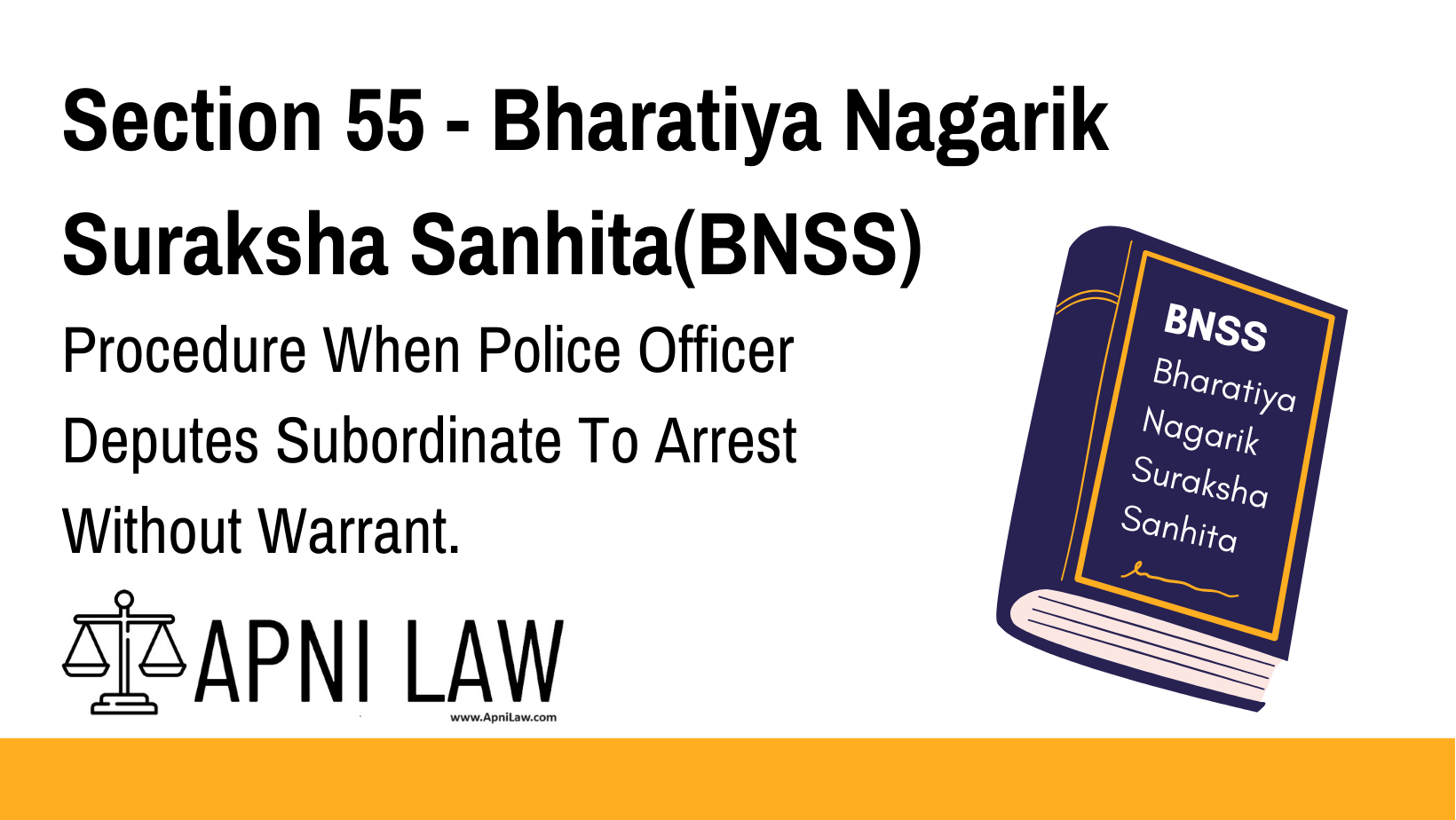Section 55(1): Procedure When Police Officer Deputes Subordinate To Arrest Without Warrant
Code
(1) When any officer in charge of a police station or any police officer making an investigation under Chapter XIII requires any officer subordinate to him to arrest without a warrant (otherwise than in his presence) any person who may lawfully be arrested without a warrant, he shall deliver to the officer required to make the arrest an order in writing, specifying the person to be arrested and the offence or other cause for which the arrest is to be made and the officer so required shall, before making the arrest, notify to the person to be arrested the substance of the order and, if so required by such person, shall show him the order.
Explanation: Procedure When Police Officer Deputes Subordinate To Arrest Without Warrant
This section deals with the arrest of a person without a warrant by a police officer who is not directly involved in the investigation. It lays down the procedure that needs to be followed in such situations.
In essence, this section states that:
- If a police officer (either the officer in charge of a police station or an officer investigating a case under Chapter XIII) needs another officer to arrest a person without a warrant (when the arrest is not being made in the presence of the investigating officer), then the investigating officer needs to issue a written order.
- This order must specify the person to be arrested, the offense or reason for the arrest, and the officer who will make the arrest.
- The arresting officer must, before making the arrest, inform the person being arrested about the substance of the order. If the person requests it, the officer must also show them the order.
Illustration
Imagine a police officer is investigating a theft case. The officer suspects that a particular individual is involved but is not present at the crime scene. The officer needs another officer to apprehend the suspect. In this case, the investigating officer would issue a written order to the arresting officer. The order would include the name of the suspect, the offense (theft), and the reason for the arrest. The arresting officer would then approach the suspect and inform them of the order before making the arrest.
Common Questions and Answers
Q: Why is this procedure necessary?
A: This procedure helps ensure that arrests are made only when lawful and that the person being arrested is aware of the reasons for their arrest.
Q: What happens if the arresting officer fails to follow the procedure?
A: The arrest could be deemed illegal, and the person arrested might have grounds to challenge the arrest in court.
Q: Does this procedure apply to arrests made in the presence of the investigating officer?
A: No, this procedure only applies to arrests made without a warrant by officers who are not directly involved in the investigation.









